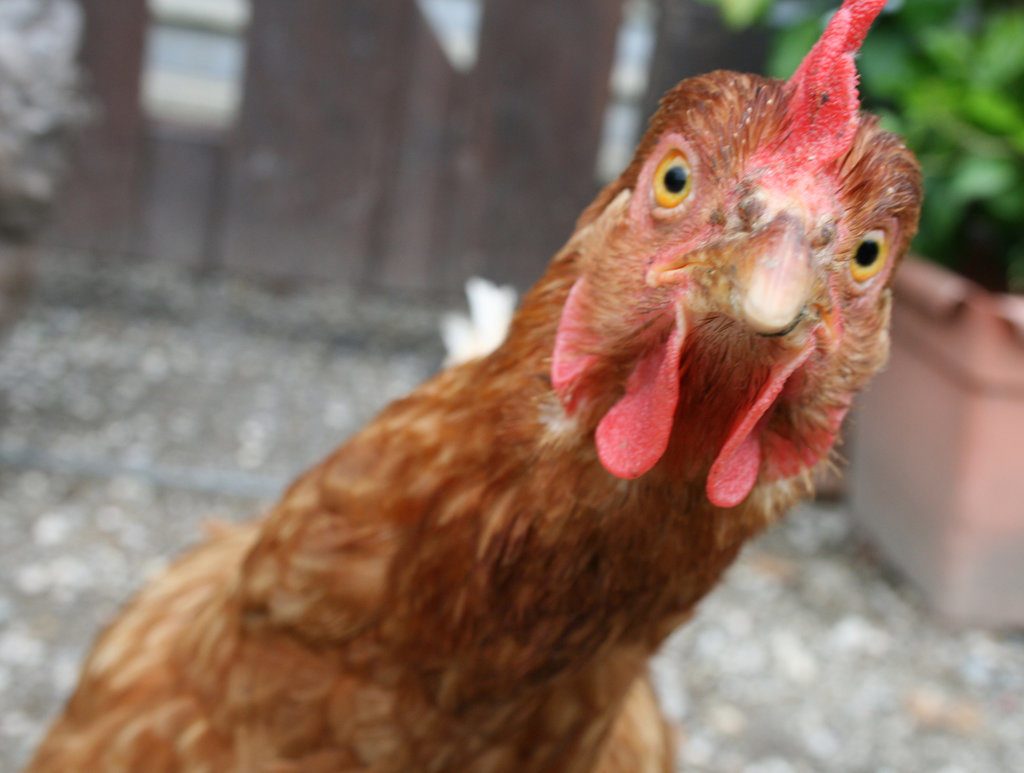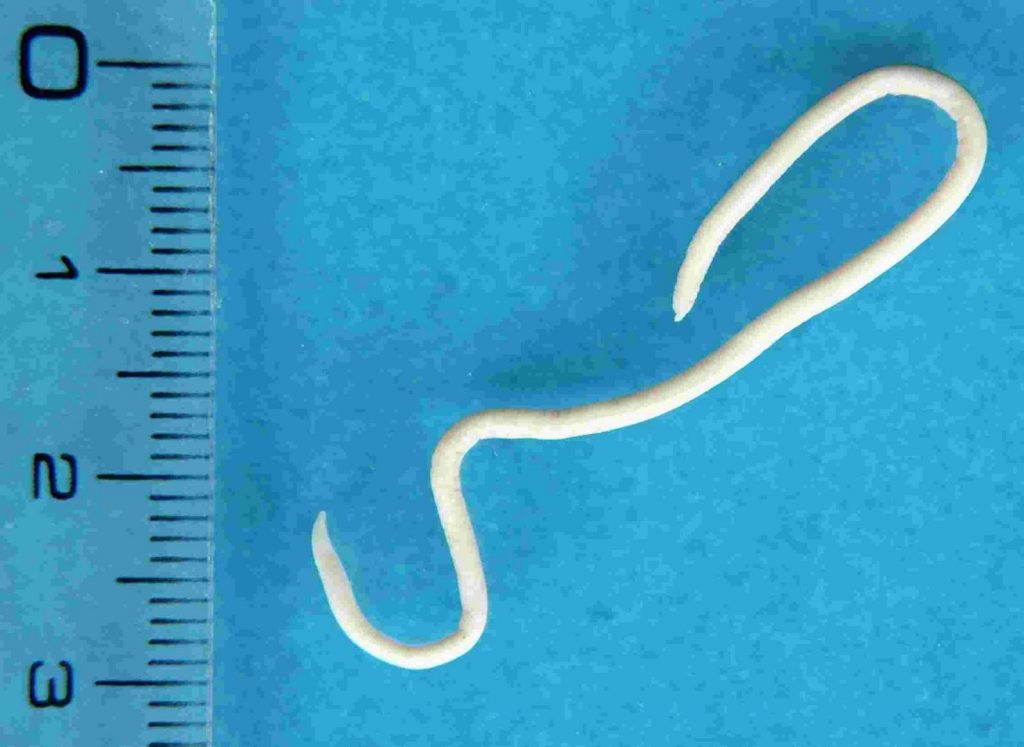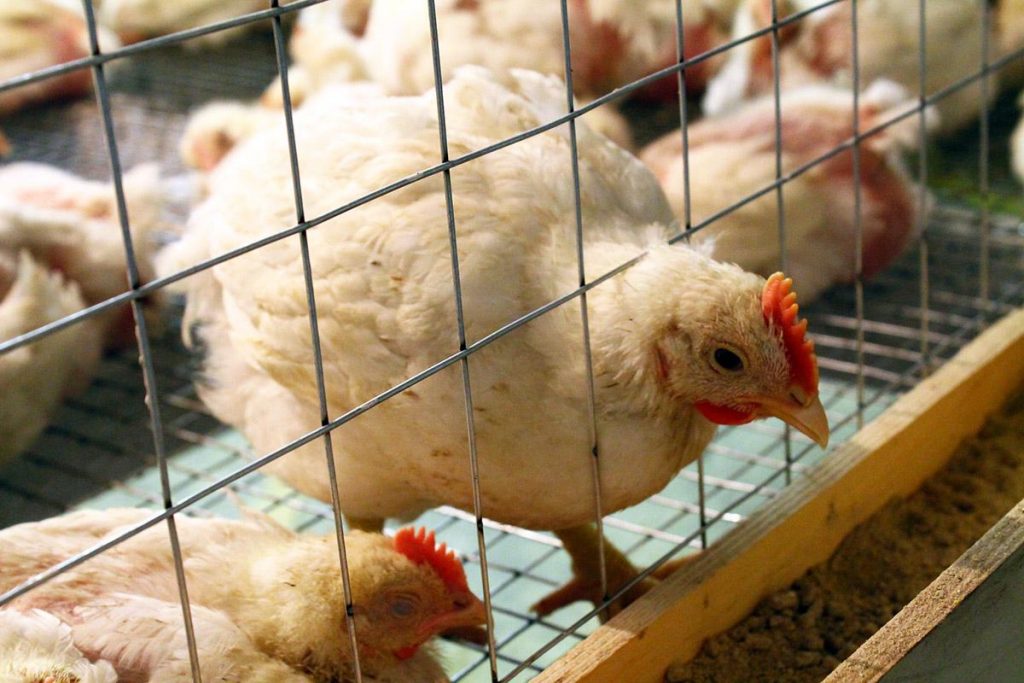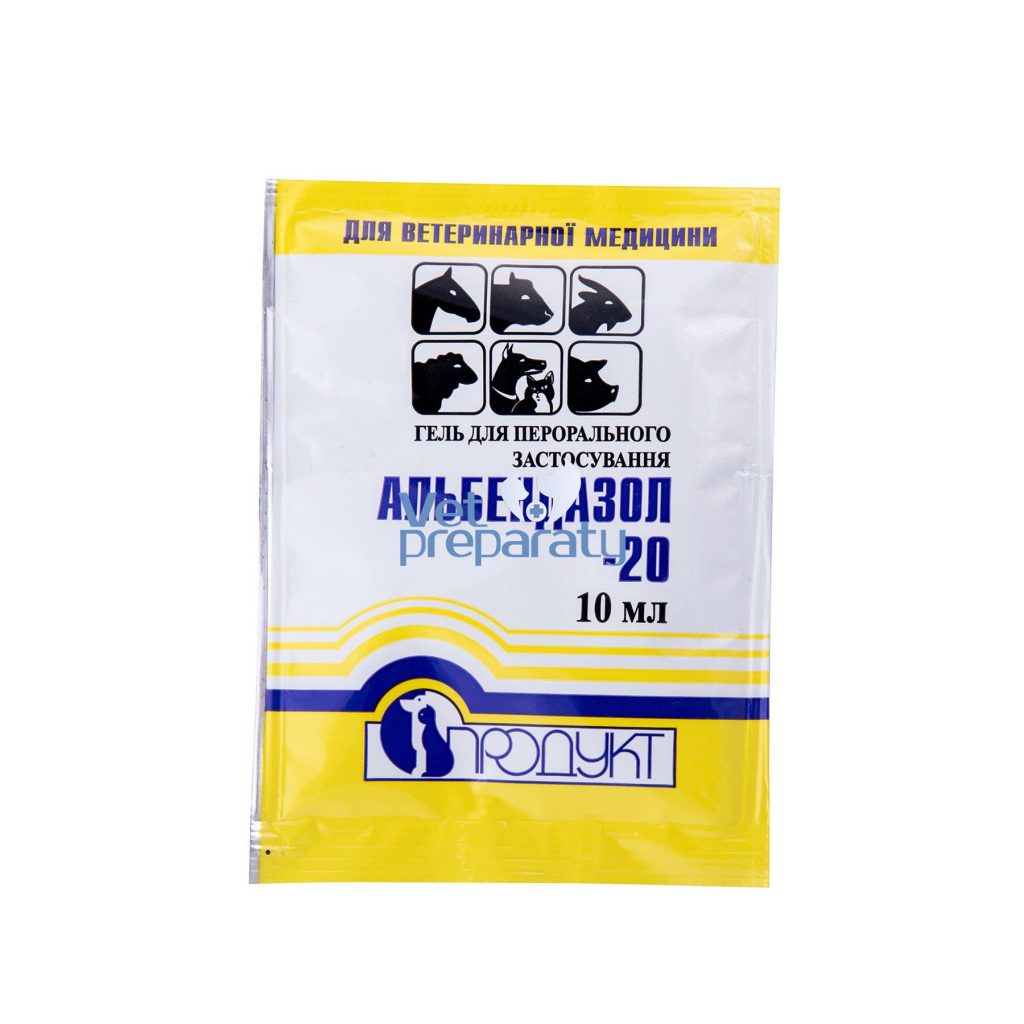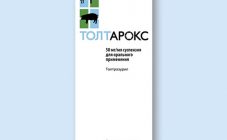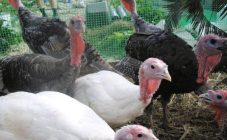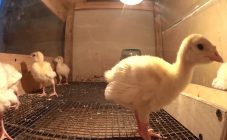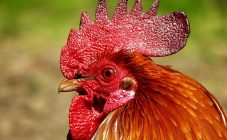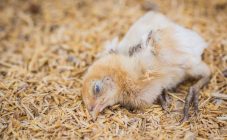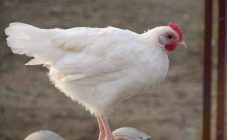Content:
- Specificity of the disease
- Varieties of helminths and a list of symptoms
- Transmission of chicken helminths to humans
- Methods for the treatment of helminthiasis in chickens
- Preparations for parasites for chickens
- The presence of contraindications for use
- Treatment with folk remedies
- Preventive measures against helminthiasis
Chickens, like other types of poultry, are susceptible to helminthiasis. The most important reason for parasite infestation is violation of sanitary standards during maintenance. In addition, poultry can develop helminthiasis after consuming contaminated feed.
Specificity of the disease
Helminthiasis refers to an invasive type of disease, the source of which is helminths.
Most often, worms in chickens settle and continue their development in the following organs:
- Gastrointestinal tract;
- lungs;
- oviduct area;
- Airways;
- goiter.
Parasites absorb blood from the internal tissues of an infected animal, cause deformation or rupture of the walls of organs. Toxic substances released by helminths poison and deplete the bird's body.
Parasites contribute to weakening the immune system of a sick animal, which increases the likelihood of contracting a dangerous infection. Poultry begins to suffer from anemia, the meat quality indicator is significantly reduced.
Among the causes of worms are the following:
- dampness of the soil in the room where the birds are bred;
- rare replacement of flooring;
- poor quality feed;
- dirty water;
- insect vectors of parasites;
- animal carrier of parasites;
- acquisition of sick birds;
- refusal of quarantine.
Another source of worm infestation may be from a farmer who tends the birds by carrying them in through dirty shoes. The most susceptible to infection with worms are chickens released into the street, representatives of light breeds, as well as birds that consume feed mainly of animal origin.
Keeping different varieties together with young animals also increases the risk of disease. For example, turkeys transmit parasites to young animals - the chicken is more resistant to this type of worm.
Varieties of helminths and a list of symptoms
An infected chicken can be identified in the presence of the following signs that characterize the general symptoms of helminthiasis:
- lack of appetite;
- low body weight;
- weakness;
- sluggish state.
Butchering the carcass, certain varieties of helminths are visible to the naked eye. Accurate diagnosis is carried out by examining infected chicken droppings in a veterinary laboratory.
The list of parasites that live in the chicken body and typical symptoms:
- Capillariasis is a disease caused by filamentous worms found in the intestines of poultry. With capillariosis, the chicken lags behind in development, has a sluggish behavior, can run weakly and refuses to eat.
- Syngamosis is a disease carried by the nematode and syngamis, which inhabit the respiratory organs. With syngamosis, the chicken has no appetite, which is accompanied by severe exhaustion and wheezing when breathing.
- Ascariasis is a disease caused by roundworms that live in the intestines. With ascariasis, the bird refuses water and feed, which is accompanied by paralysis and a decrease in egg production.
- Cestodosis is a disease transmitted by a tapeworm parasite that lives in the gastrointestinal tract. The disease is accompanied by such a manifestation as weakness and poor appetite.
- Histomoniasis is a disease carried by histomonads that live in the liver. Accompanied by apathy, yellow or green liquid droppings.
- Amidostomiasis is a disease that is transmitted by nematodes and amidostoma helminths that live in the stomach. A sick layer is apathetic, refuses to feed. Another sign of amidostomosis is that young hens are developing slowly.
- Trematodosis is a disease caused by almost microscopic parasites that live in the oviduct, which are pear-shaped and have a yellowish tinge of the body. Infection occurs when eating shellfish. The presence of this disease can be recognized by the deformation of the shape of the oviduct and the absence of a shell or yolk.
- Nocotylidosis is a disease transmitted by parasites with a rounded torso that live in the rectum of a bird. Infection occurs when the larvae are swallowed on a swampy paddock. The list of symptoms includes a decrease or lack of response to feed, a slowdown in weight gain. Young growth may die altogether.
- Daveniosis is a disease caused by small-sized cestodes. Symptoms of this disease include symptoms such as low mobility of the animal, refusal to use feed. Severe consequences are the death of 65% of the livestock or the presence of a lethal outcome of certain individuals, before which sick birds are paralyzed for some time.
- Heteracosis is a disease transmitted by chickens pecking the eggs of this type of worms. The disease is indicated by low mobility of chickens, lack of reaction to food and diarrhea. In addition, the area of the digestive tract undergoes deformation.
Infected chickens produce a small number of eggs, which differ in shell thinness. If the respiratory organs are affected, there may be a blanching of the color of the comb and the publication of wheezing.
Transmission of chicken helminths to humans
The main method of transmission of worms from chicken to humans is by eating meat.
To avoid infection with helminths, chicken meat must be thoroughly boiled and fried.
Infected eggs have thin shells, sometimes just a film. This product should be disposed of.
Methods for the treatment of helminthiasis in chickens
When the first symptoms of this disease are detected, treatment measures should be started immediately. All birds should be treated with certain drugs, even those chickens that do not show signs of worm infestation.
The action of all existing drugs sold by veterinary pharmacies has significant similarities.
They can be presented in the following forms:
- solutions;
- suspensions;
- powders;
- pills.
All livestock are treated at the same time. Before taking the drug, birds should not be fed for ten hours. The medicine is added to the feed (the dosage depends on the weight of the chicken). The processed food is left in the cage until finally eaten. Giving additional feed to the birds during treatment is unacceptable.
Upon completion of the treatment, the walls of the hen house are treated with caustic soda, chlorine or carbolic acid, and the litter is burned.
Preparations for parasites for chickens
Today, the pharmaceutical industry provides a large number of anthelmintic drugs. The action of each of them is aimed at paralyzing the neuromuscular tissue of helminths, their loss of the ability to move, which does not allow them to be retained in the body of the animal and contributes to their exit.
The list of the most widely used drugs against worms in chickens includes:
- Piperazine added to feed. Calculation of piperazine for chickens dosage is ⅓ tablets for 1 kilogram of chicken body weight. Compound feed, to which piperazine is added, should be given to chickens (on an empty stomach, for two days). After a week, piperazine for chickens, the dosage required for treatment that is repeated, must be observed.
- Pirantel, capable of curing helminthiasis in both humans and chickens. It is applied 3 times, observing a 6-day interval. When the pirantelous course of treatment is completed, meat cannot be eaten for 2 months, eggs - 4 days.
- Flubendazole is a British-made anthelmintic drug based on the action of flubendazole. This is a powder that must be mixed with feed in the amount of 3 grams per kilogram of chicken weight. It has an effect both on the eggs of worms and on adult larvae. The course of treatment continues for a week.
- Levamisole-plus is a product sold in liquid form. This drug is intended to feed infected birds. To do this, add it to the drinking bowl at the rate of 1 milligram per 240 milliliters of water. The beginning of the use of homemade meat and meat products is possible 8 days after treatment.
- Albenmix is an anthelmintic drug that is designed to remove adult helminths by adding it with morning feed. The estimated rate is 1 gram per 10 kilograms of chicken weight.
- Ivermectin is a drug with a wide spectrum of action aimed at destroying internal and external helminths.
- Alvet used for ascariasis and heterocytosis. The estimated dosage is 0.5 grams per 10 kilograms of bird weight. The duration of the course of treatment is two days. The drug should be added to the morning food.
- 8% Levamisole is a medicine produced in powder form with a wide range of effects. It is intended for mixing with compound feed in the amount of ten milligrams per 1 kilogram of chicken mass. The duration of the course of treatment is three days.
- Febtal, used for amidostomosis, capillariasis and ascariasis. The drug is dissolved in water in an amount of 0.4 milligrams per 1 kilogram of chicken body weight. Treatment with this drug continues for three days.
- Univerm aimed at the destruction of nematodes. Method of application - mixing into compound feed in an amount of 0.2 grams per kilogram weight of a chicken. The duration of the course is three days.
The presence of contraindications for use
The basis of the effect of all antihelminthic drugs are toxic substances. Compliance with the recommended dosage contributes to the destruction of parasites, helping to remove them from the chicken's body without causing toxic effects.However, if the bird is noticeably emaciated or the presence of an infectious disease, the use of drugs is unsafe.
Treatment with folk remedies
There is more than one popular method for removing parasites; they serve as an alternative to drugs made on a chemical basis.
Preventive measures against the spread of worms and the destruction of existing ones are considered to be the addition of the following components of plant origin to the feed:
- crushed garlic;
- green onion feathers;
- pumpkin seeds;
- pomegranate seeds;
- lingonberries;
- wild garlic.
It is also recommended to add a decoction to the water every three months, than you can drink broilers from worms, from components such as:
- chamomile flowers;
- coniferous needles;
- birch buds;
- sorrel leaves.
Preventive measures against helminthiasis
The list of preventive actions aimed at preventing infection with worms in chickens and humans includes:
- Thorough handling of hands after visiting the chicken coop.
- Regular cleaning of droppings.
- Maintaining the required level of air humidity.
- Periodic inspection of chickens.
- Carrying out measures for disinfection of the chicken coop.
- Prevention of contact of their chickens with birds of another's chicken coop.
- Getting rid of parasitic foci in the chicken coop.
- Extermination of rodents indoors with birds.
- After adding antihelminthic drugs to the feed, give them to new chickens.
- In quarantine conditions, to carry out symptoms and treatment of worms in chickens.
Infection of chickens with helminthiasis is considered a dangerous phenomenon, both for birds and for their owners, since the transmission of parasites to humans is possible through meat products or chicken droppings. This disease is spreading at a tremendous rate. Parasite infestation decreases egg production and can lead to loss of livestock. The quality and quantity of chicken meat is reduced as a result of weight loss. Thus, the examination of individuals should be carried out regularly, and, if worms are found in broilers, symptoms and treatment should be started immediately. It is also not recommended to eat eggs and meat obtained from infected livestock.
